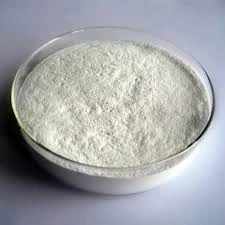
Tach . 18, 2024 06:11 Back to list
redispersible polymer powder rdp
Understanding Redispersible Polymer Powder (RDP)
Redispersible Polymer Powder (RDP) has become an essential component in various industries, particularly in construction, adhesives, and coatings. This versatile product offers numerous benefits that enhance the performance characteristics of building materials and improves the overall quality of end products. In this article, we will explore what RDP is, its properties, applications, and advantages that make it a preferred choice for many manufacturers.
What is Redispersible Polymer Powder?
Redispersible Polymer Powder is a dry powder that, upon contact with water, can form a stable dispersion. It is typically made from synthetic polymers such as vinyl acetate, ethylene, and others. These polymers are produced in emulsion form and then spray-dried to create a fine powder that can be easily stored and transported. When mixed with water, RDP redistributes the polymer particles, creating a viscous solution that can be incorporated into various formulations.
Properties of RDP
One of the key properties of RDP is its ability to enhance adhesion and flexibility in construction materials. When used in cementitious systems, such as tile adhesives, plaster, and skim coats, RDP improves bonding strength and workability. Additionally, it provides water resistance, making it ideal for exterior applications that are exposed to moisture. RDP also imparts crack resistance and helps maintain the integrity of the materials over time.
Moreover, RDP contributes to the formation of a cohesive film once the water evaporates, allowing for excellent mechanical properties. The resulting films are often flexible, allowing for some degree of movement in the substrates without compromising the bond. This is particularly beneficial in applications such as flooring and tiling, where substrate movement due to thermal expansion or contraction can lead to cracking.
Applications of RDP
redispersible polymer powder rdp

The applications of RDP are vast and varied. In the construction industry, it is widely used in tile adhesives, self-leveling compounds, exterior insulation and finish systems (EIFS), and various types of plasters and renders. RDP is also a popular choice in the production of dry-mix mortars, where it contributes to improved performance and ease of use.
In the adhesive industry, RDP is utilized in various formulations for paper, wood, and textile adhesives. Its ability to enhance adhesion and reduce drying time makes it an attractive option for manufacturers. Furthermore, RDP is used in paints and coatings to improve elasticity and flexibility, which helps to prevent cracking and peeling over time.
Advantages of RDP
The use of RDP in formulations offers several advantages. First and foremost, it greatly improves the workability of construction materials, allowing for easier application and better performance. This translates to higher efficiency on job sites, which can lead to reduced labor costs and increased productivity.
Another significant advantage is the environmental aspect. RDP products often contain lower levels of volatile organic compounds (VOCs) compared to traditional formulations. This makes them more environmentally friendly and safer for both workers and end-users. Manufacturers are increasingly seeking sustainable options, and RDP fits well into this trend.
Additionally, RDP is incredibly versatile, accommodating a wide range of formulations and applications. Its ability to blend seamlessly with different materials allows for customizable solutions tailored to specific project requirements. This flexibility makes RDP a go-to option for many formulators in the industry.
Conclusion
In conclusion, Redispersible Polymer Powder has established itself as a crucial ingredient in various sectors, particularly in construction and adhesives. Its properties, such as enhanced adhesion, water resistance, and flexibility, make it indispensable for high-performance building materials. As industries continue to prioritize efficiency and environmental sustainability, RDP is expected to play an even more prominent role in future formulations. Understanding the benefits and applications of RDP can offer manufacturers and contractors a competitive edge in a rapidly evolving market. By incorporating RDP into their products, they can ensure superior performance, longevity, and satisfaction for end-users, ultimately contributing to the overall quality and resilience of construction projects.
-
Unlocking the Benefits of HPMC Products: A Gateway to Versatile Applications
NewsAug.07,2025
-
Unleashing the Potential of HPMC Ashland: A Comprehensive Look
NewsAug.07,2025
-
Tile Bonding Cellulose: The Key to Superior Adhesion and Durability
NewsAug.07,2025
-
Hydroxypropyl Methylcellulose Powder: The Versatile Component in Modern Pharmaceuticals
NewsAug.07,2025
-
Hydroxyethyl Cellulose: The Versatile Solution for Various Industries
NewsAug.07,2025
-
Hydroxyethyl Cellulose (HEC): The Versatile Polymer for Various Applications
NewsAug.07,2025







